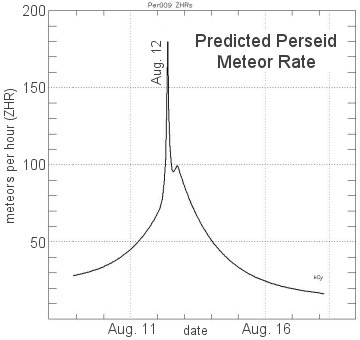Just a quick note reporting on my observations tonight.
I arrived home from my week-long road trip too late to attend the picnic, but made it to the Perseids night at BCA, arriving at about 10 PM.
I had studied the clear sky chart and was convinced that if the sky was not already clear at BCA, it ‘soon’ would clear.
People were already leaving after enjoying an evening of interactive meteorite exhibits and other stuff. I had a chance to buy a Klondike before the snack bar shut down for the evening.
I looked up and saw a complete gray sky, but “I paid my 4 bits to see a high diving act, and I’ma going to see a high diving act”, so I said to the clouds, “start climbing”, and then waited.
(I wonder if some young people might not recognize that quotation.)
I think i was last to leave the parking lot, but i headed to the alternate site, and along with 4 others, waited for the sky to clear.
The sky eventually cleared around 1 AM, and I saw 7 ‘average to above-average’ meteors in the sky.
I was starting to get pretty tired when I packed up around 2:30 AM.
I saw Vega a few times at the zenith, and that sustained my hopes.
Later, I observed Arcturus in the Western sky, and it was the only star that pierced the thin clouds for a time. It was hard to discern whether it was a star or the headlight of an airplane for a while, but eventually it’s location and steadiness won me over.
There were still clouds to the north and the sky-glow was pretty bad. I could see the Milky Way through Cygnus, though.
We had a long conversation about observing techniques and everything else.
Others who were there may like to comment.
I saw one strange thing. In the tail of Cygnus, on the north side, I saw 3 evenly spaced strobe flashes, as from an airplane, but no more flashes. It was strange. I don’t think it was my imagination, but I wonder what kind of satellite could have done it. Perhaps a weather balloon?

